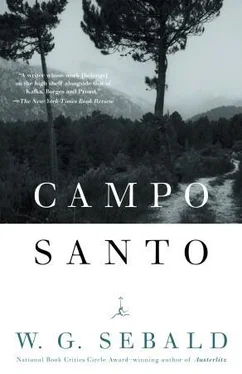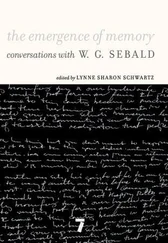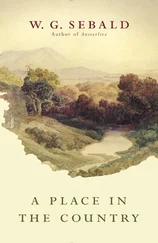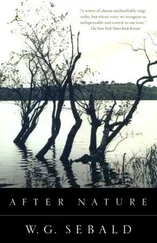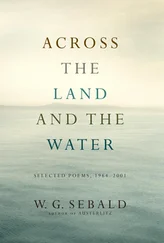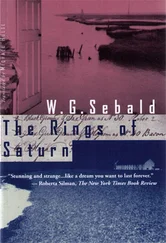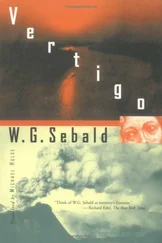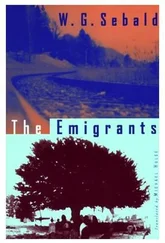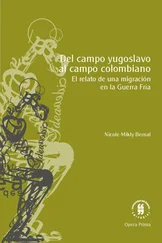26 Ibid., p. 31; Eng., p. 75.
27 This and the following quotation are from ibid., p. 93.
28 Ibid., p. 100f.; Eng., p. 140.
29 From the introduction to the German version of David Cooper, Psychiatry and Anti-Psychiatry (London, 1967); Ger. Psychiatrie und Antipsychiatrie (Frankfurt, 1971), p. ii.
30 Peter Handke, Wunschloses Unglück , Frankfurt, 1974, p. 48; Eng., A Sorrow Beyond Dreams , tr. Ralph Manheim, London, 1976, p. 31.
31 Ernst Cassirer, Sprache und Mythos , Studien der Bibliothek Warburg, Leipzig and Berlin, 1925, p. 5; Eng., Language and Myth , tr. Susanne E. Langer, New York, 1946, pp. 6–7.
BETWEEN HISTORY AND NATURAL HISTORY
1 Heinrich Böll, Hierzulande — Aufsätze zur Zeit , Munich, 1963, p. 128.
2 Günter Eich, 1907–72, poet and playwright; Paul Celan (pseudonym of Paul Antschel), 1920–70, poet; Wolfgang Borchert, 1921–47, poet, actor, writer of plays and short stories; Hans Erich Nossack, 1901–77, novelist, wrote on the air raids of the Second World War in Der Untergang , much quoted in the present work; Ernst Kreuder, 1903–72, journalist and novelist; Ilse Aichinger, b. 1921, novelist, writer of plays and short stories; Wolfdietrich Schnurre, 1920–89, novelist and literary critic; Hans Werner Richter, 1908–93, novelist; Walter Kolbenhoff (pseudonym of Walter Hoffmann), 1908–93, novelist; Rolf Schroers, 1919–81, writer; Elisabeth Langgässer, 1899–1950, poet, novelist, and essayist; Karl Krolow, 1915–99, poet; Siegfried Lenz, b. 1926, novelist; Arno Schmidt, 1914–79, novelist, essayist, and critic; Alfred Andersch, 1914–80, novelist and essayist; Walter Jens, b. 1923, novelist and essayist; Marie Luise von Kaschnitz, 1901–74, novelist and poet.
3 Heinrich Böll, Frankfurter Vorlesungen , Munich, 1968, p. 121.
4 Hans Erich Nossack, “Er wurde zuletzt ganz durchsichtig — Erinnerungen an Hermann Kasack,” in Pseudoautobiographische Glossen , Frankfurt, 1971, p. 50. The text was first published in Hamburg in 1966 in the Jahrbuch der Freien Akademie der Künste .
5 In the essay cited above, Nossack speaks of its being an international success. See ibid., p. 50.
6 Hermann Kasack, Die Stadt hinter dem Strom , Frankfurt, 1978, p. 18.
7 Ibid., p. 10.
8 A term coined by Nossack, in “Er wurde zuletzt …,” p. 152.
9 Kasack, Die Stadt , p. 152.
10 Ibid.
11 Ibid., p. 154.
12 Ibid., p. 142.
13 Ibid., p. 314.
14 Ibid., p. 315. Arno Schmidt’s prose work of 1949, Leviathan oder die beste der Welten , rests upon comparable juggling with contemporary reality. In this work, the theory of the successive self-realization of a negative cosmic principle is presented with physical and philosophical sophistry.
15 Cf. Nossack, “Er wurde zuletzt …,” p. 47: “Real literature was a secret language at the time.”
16 Die Stadt , p. 348.
17 Hans Erich Nossack, “Der Untergang,” in Interview mit dem Tode , Frankfurt, 1972, pp. 209, 225.
18 Ibid., p. 233.
19 Ibid., p. 230.
20 Ibid., p. 229.
21 Ibid., p. 210.
22 Ibid., p. 209.
23 This quotation is from the autobiographical essay Dies lebenlose Leben (“This Lifeless Life”), in which Nossack describes his time under the Fascist regime. It refers to a former fellow student who took his own life in 1933 because he wanted to be among the victims.
24 See in particular Canetti’s Crowds and Power , Weiss’s Abschied von den Eltern (“Farewell to My Parents”), and Hildesheimer’s Tynset .
25 Nossack, op. cit., p. 193 (the “classical” figure embodying this attitude is probably Pastor Helander, who dies with his boots on in Alfred Andersch’s novel Sansibar oder der letzte Grund (“Zanzibar: Or, the Last Reason”), dubious as that book is in many respects); Pseudoautobiographische Glossen , p. 21.
26 Der Untergang , p. 254.
27 Ibid.
28 Pseudoautobiographische Glossen , p. 21.
29 Hans Erich Nossack, “Bericht eines fremden Wesens über die Menschen,” in Interview mit dem Tode , p. 8.
30 Der Untergang , p. 204.
31 Ibid., pp. 205, 208.
32 Ibid., p. 211f.
33 Ibid., p. 226f.
34 Victor Gollancz, In Darkest Germany , London, 1947. The book is a compilation of newspaper articles, letters, and observations by Gollancz himself, and in its very lack of literary pretention it conveys a precise impression of the situation of the German population directly after the war. It includes a chapter entitled “This Misery of Boots,” which is devoted to the footwear of the postwar Germans, as well as photographs documenting about twenty pairs of these boots and shoes. The extremely battered items of footwear shown do indeed suggest a phenomenon of natural history, reminding the viewer of all the connotations of the term “stout shoes” ( festes Schuhwerk ) for the Germans even later. It is almost a model of the documentary linking of past and present as practiced by Kluge. Gollancz was also one of the few individuals to speak up for the German people immediately after the war, just as he had previously been one of the few to point, at the earliest possible moment, to the murder of the Jews in the concentration camps and suggest practical countermeasures, without getting much response. (See Let My People Go — Some Practical Proposals for Dealing with Hitler’s Massacre of the Jews and an Appeal to the British Public , London, 1943. An impressive historical study of this subject has been published: T. Bower, A Blind Eye to Murder , London, 1981.)
35 Cf. Frankfurter Vorlesungen , p. 82.
36 Der Untergang , p. 216.
37 Frankfurter Vorlesungen , p. 83.
38 Der Untergang , p. 243.
39 Alexander Kluge, Neue Geschichten. Hefte 1–18, Unheimlichkeit der Zeit , Frankfurt, 1977, p. 102.
40 Theodor W. Adorno, Prismen , Munich, 1963, p. 267; Eng., Prisms , tr. S. and S. Weber, London, 1967, p. 260.
41 Kasack, Die Stadt , p. 82.
42 Ibid., p. 22.
43 Der Untergang , p. 217.
44 Elias Canetti, Die gespaltene Zukunft , Munich, 1972, p. 58.
45 Der Untergang , p. 219.
46 Ibid., p. 248f.
47 Ibid., pp. 248–49.
48 Theodor Adorno, Kierkegaard — Konstruktion des Ästhetischen , Frankfurt, 1966, p. 253.
49 Der Untergang , p. 245.
50 The Odyssey, XXII, 471–73, Eng. tr. Robert Fagles, New York, 1996.
51 Der Untergang , p. 245.
52 Neue Geschichten , p. 9.
53 Ibid., p. 83f. The conclusions that the reader can draw from these “statements” converge with the ideas published by Solly Zuckerman in his autobiography, From Apes to Warlords (London: 1978). Lord Zuckerman was scientific adviser on air warfare strategy to the British government during the war, and with great personal commitment tried to dissuade High Command of the bomber forces under Air Marshal Arthur “Bomber” Harris from continuing with the strategy of wholesale destruction that went by the name Operation Overlord. He backed, instead, a selective strategy aimed against the enemy’s system of communications, which he was convinced would have brought the war to an end sooner and with far fewer victims, an opinion that, incidentally, coincides with the conjectures on this subject put forward by Speer in his memoirs. Lord Zuckerman writes: “As we now know, bombing at about a hundred times the intensity of anything ever suffered by European cities during the Second World War at no moment broke the spirit of the people of Vietnam against whom the American forces were fighting between 1964 and 1973. In those nine years, seven million tons of bombs were dropped on South Vietnam (which received about half of the total), North Vietnam, Laos and Cambodia — three times the total tonnage of British, American and German bombs dropped on European soil in the Second World War” ( Apes to Warlords , p. 148). These observations bear out his thesis of the objective pointlessness of “area bombing.” As Lord Zuckerman says in his book, once he had seen for himself after the war the effects of the air raids on German cities, he agreed to write an account entitled “The Natural History of Destruction” for the journal Horizon , edited by Cyril Connolly, but unfortunately this project was never carried out.
Читать дальше
